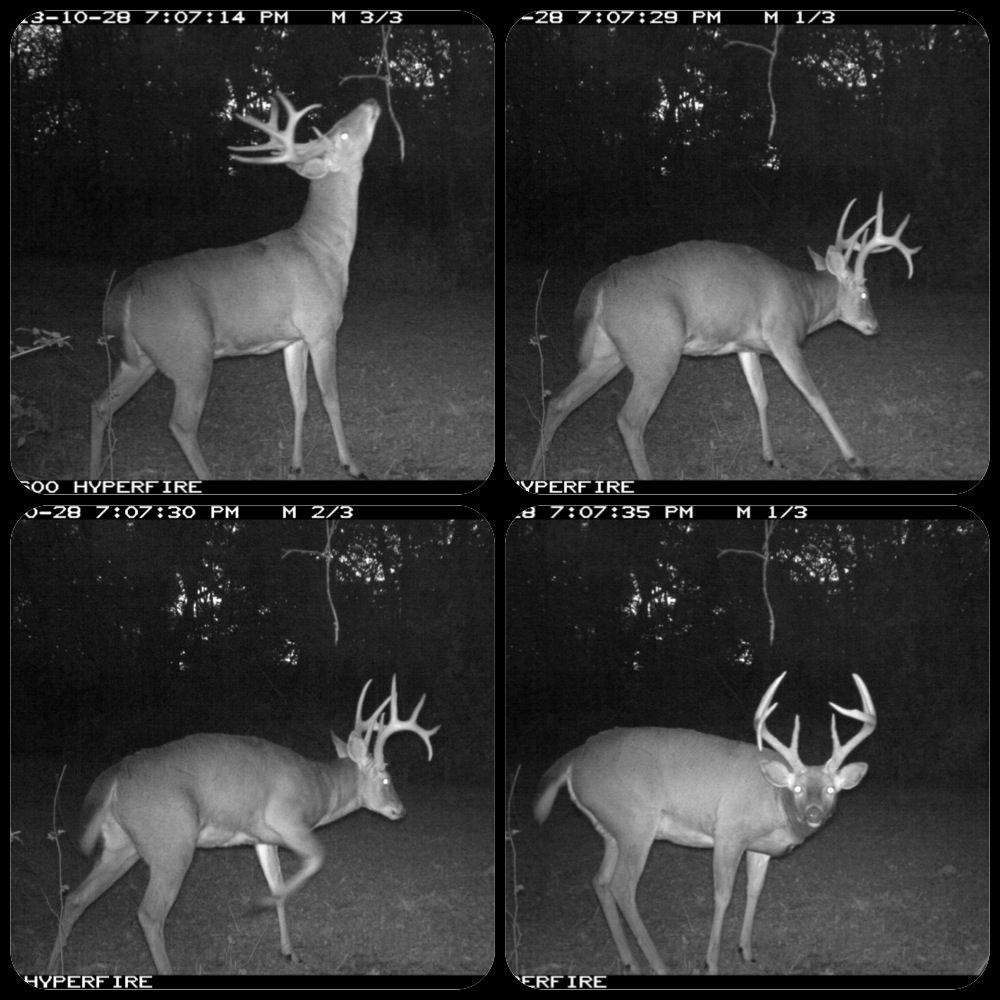Using Scrapes To Determine The Stage Of The Rut
Filed under: Hunting Blog
There are lots of scrapes being worked at my place this week! The same is true throughout most of the whitetail’s range. Kable, a GrowingDeer.tv Pro Staff member that hunts in Southern Indiana, shared these Reconyx images. This three year old buck aggressively worked this scrape October 28th at the property where Kable hunts.

Scrapes are a great indicator of the stage of the rut and provide information I use when selecting stand locations.
Scrapes are like the old phone booths in that they serve as communication posts for the deer herd. They are not territorial markers. Deer use scrapes to communicate who’s in the neighborhood along with their status and/or to check the status of other deer in the area.
Deer use scrapes the most just before most does become receptive to bucks. Once that occurs, bucks aren’t worried about status and does don’t need to go to a scrape as they are producing enough scent to communicate their status wherever they are.
So, once you see scrapes being actively used, you know the pre-rut is rolling and bucks will likely be more active during daylight hours unless the daytime temperatures are way above normal. That stage will last about two weeks and then most of the scrapes won’t be visited as much. In fact, you’ll notice leaves covering most of the scrapes. That’s because enough of the does are receptive that bucks leave the scrapes to find those very attractive does.
So, how can deer hunters use this information to hunt more effectively? I use this information to select stand locations. If most of the scrapes are being kept open and especially if I have trail camera images of a mature buck using a scrape, I’ll hunt near that scrape. If most scrapes have been open and actively used for more than a week or so, I’ll switch to hunting travel corridors or close to bedding areas where I expect bucks to be cruising in search of receptive does.
Remember, scrapes are much more than potential hunting locations. They are a great indicator of the stage of the rut. If most scrapes were active a week ago that tells me just as much about where I should be hunting as when most scrapes are active. The next time you are in the woods, pay attention to the condition of the scrapes and use that information the next time you select the stand location.
Growing and hunting deer together,
Grant



